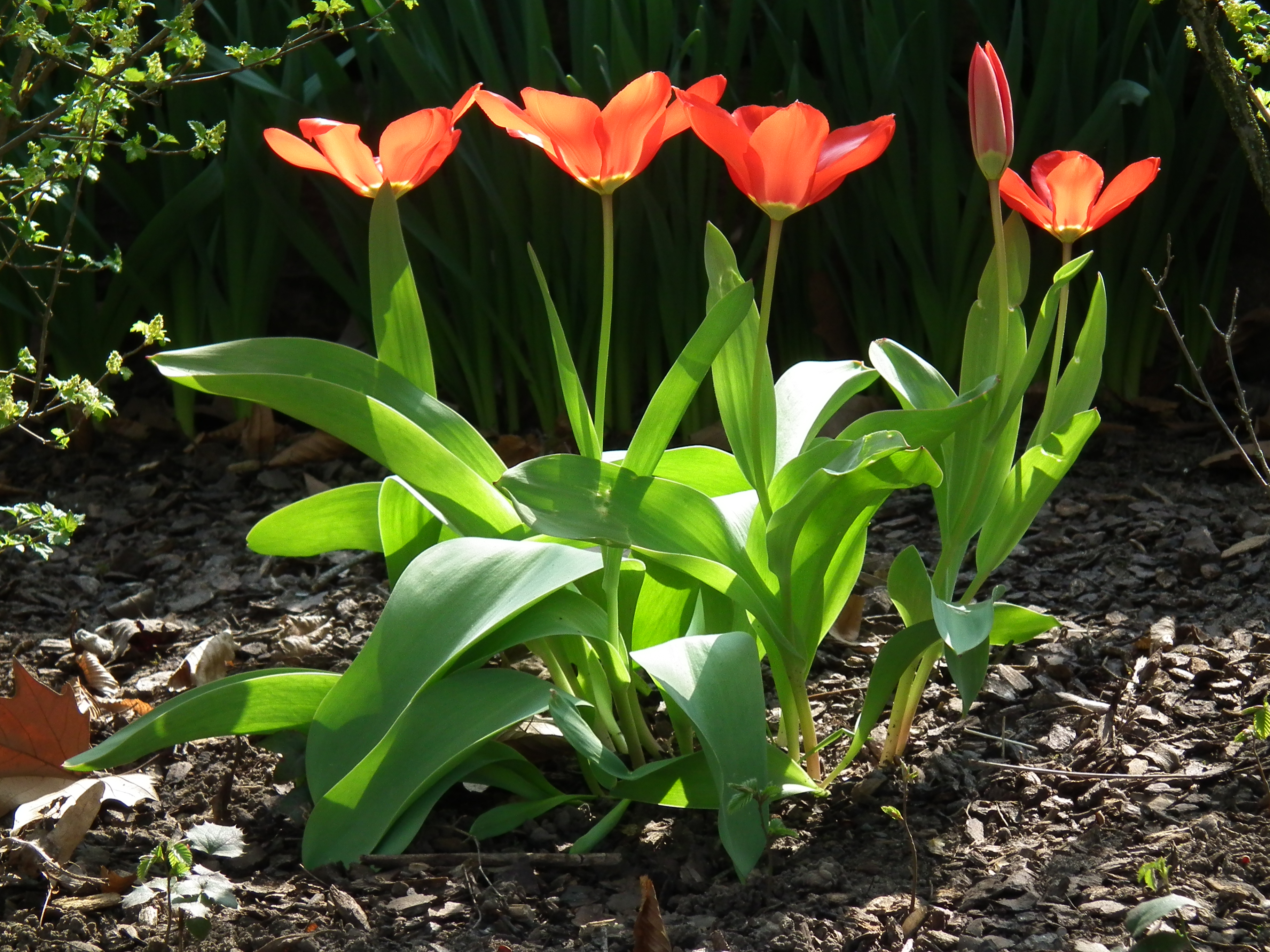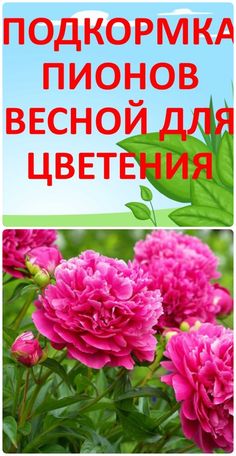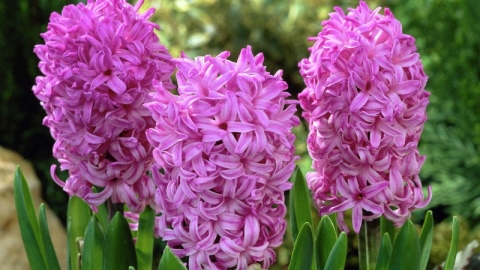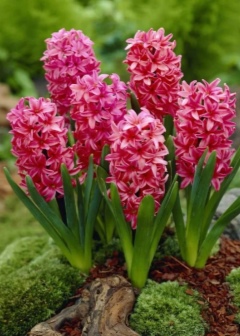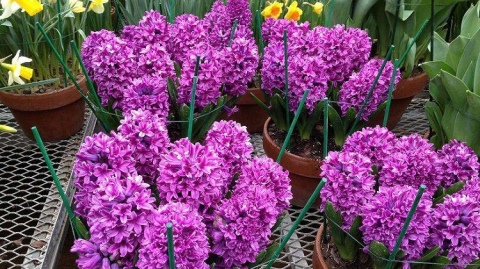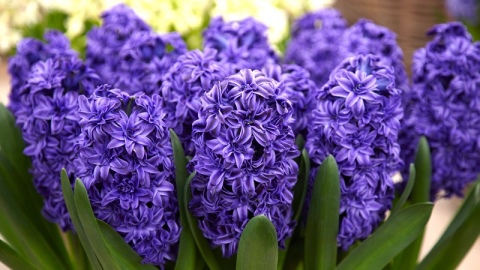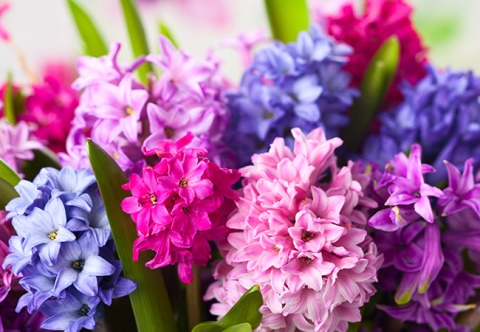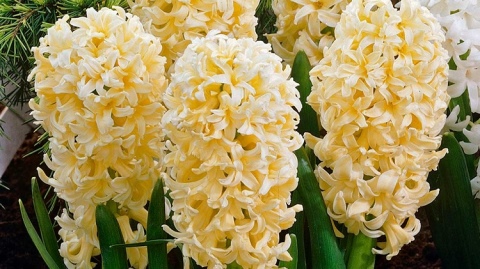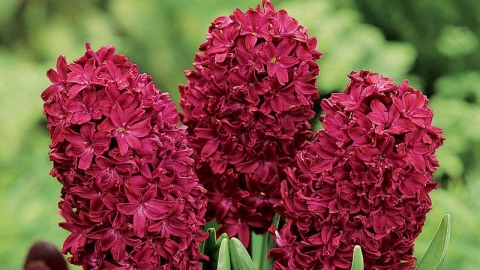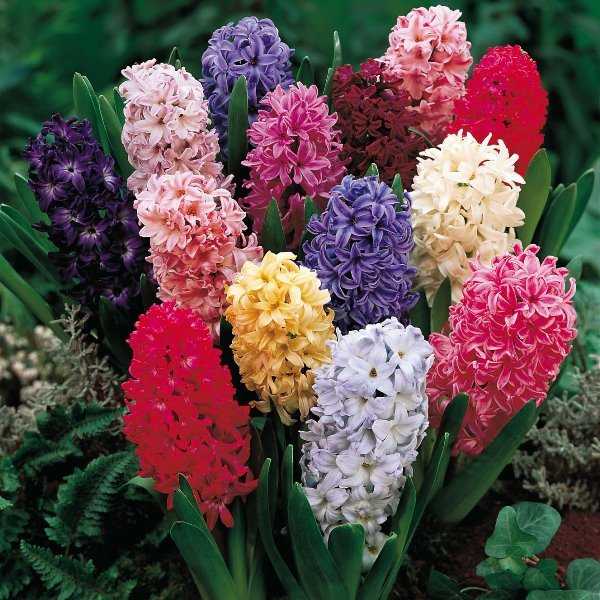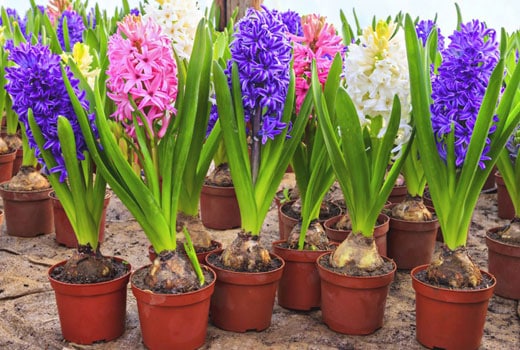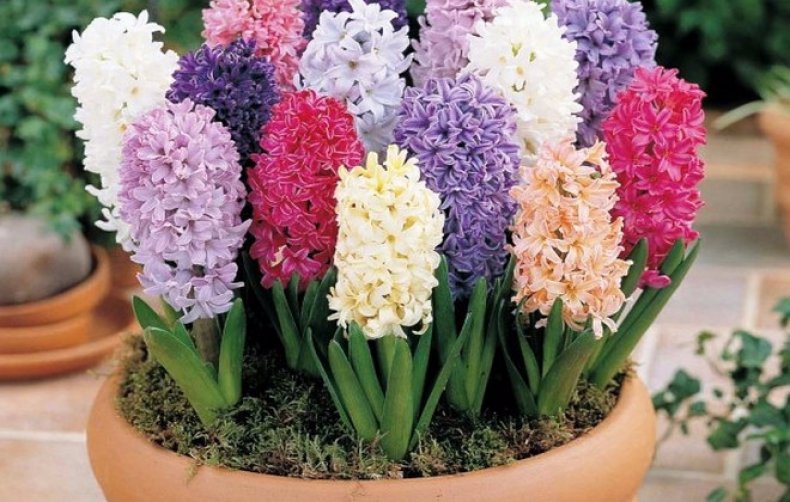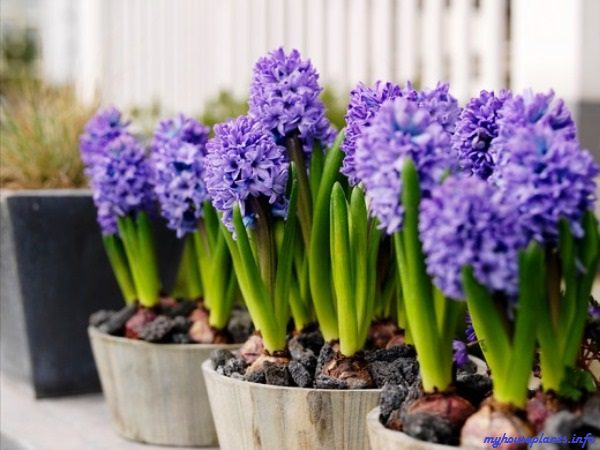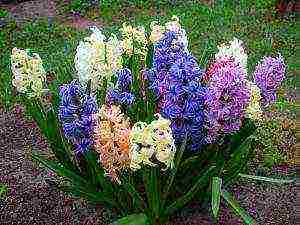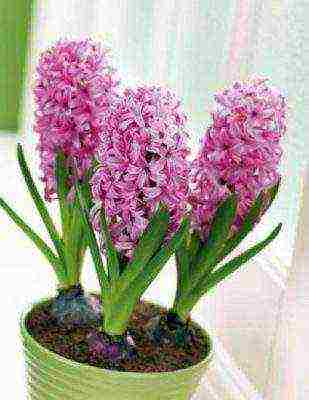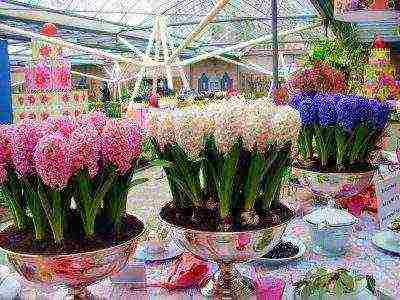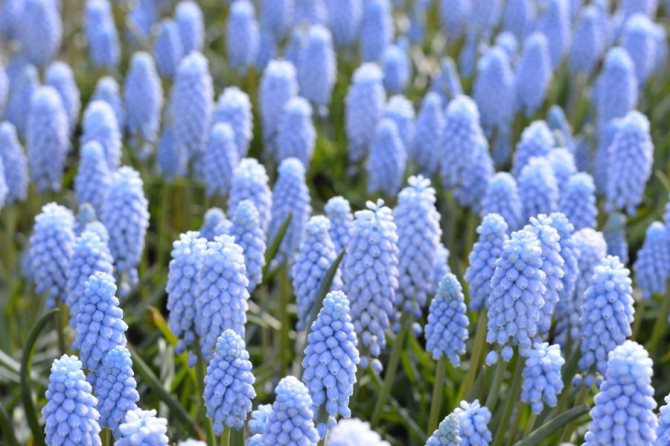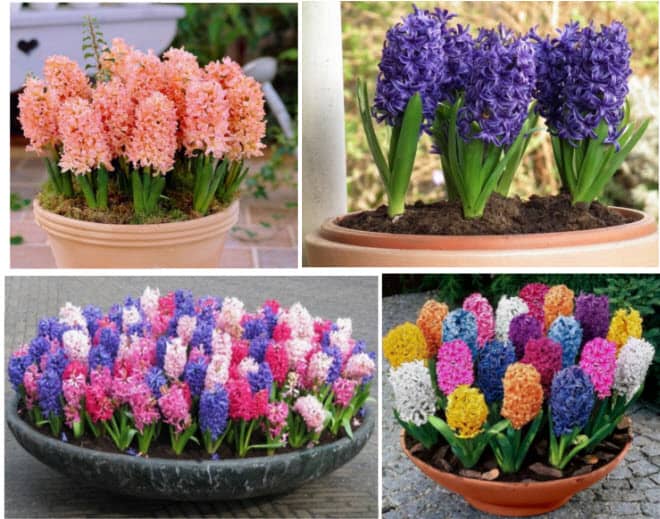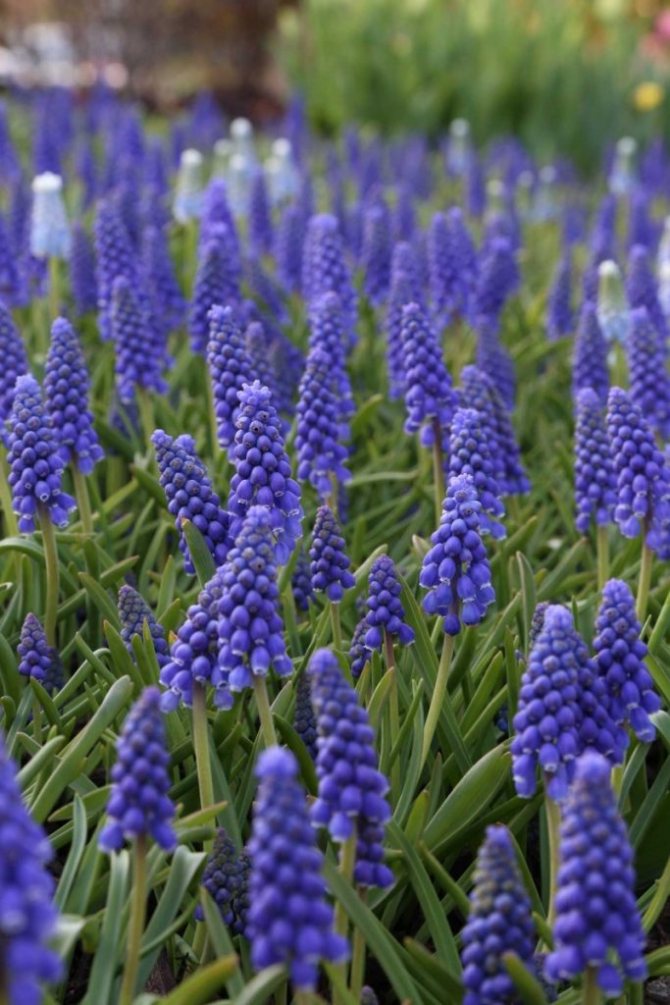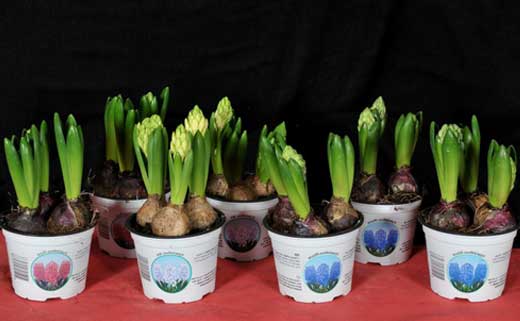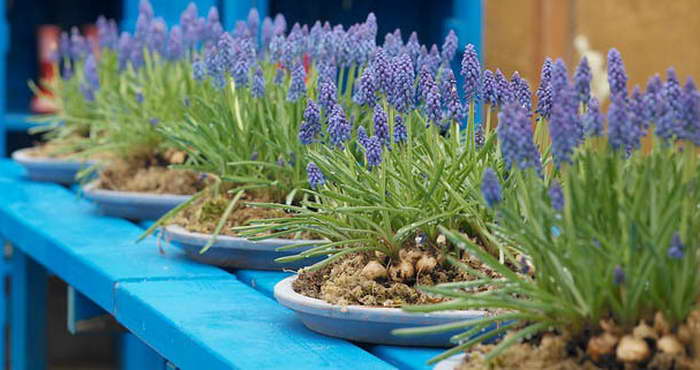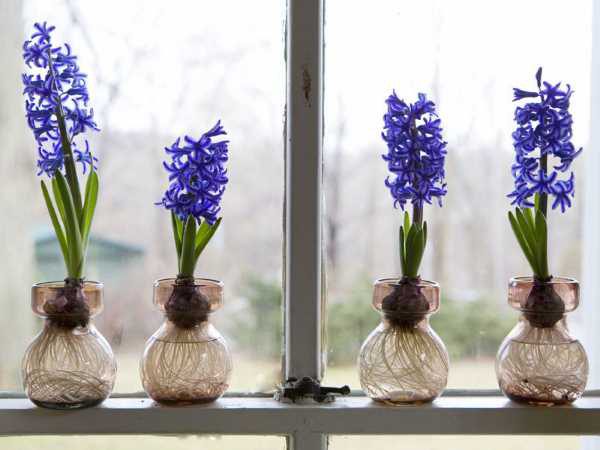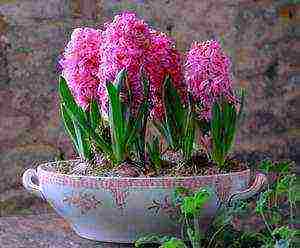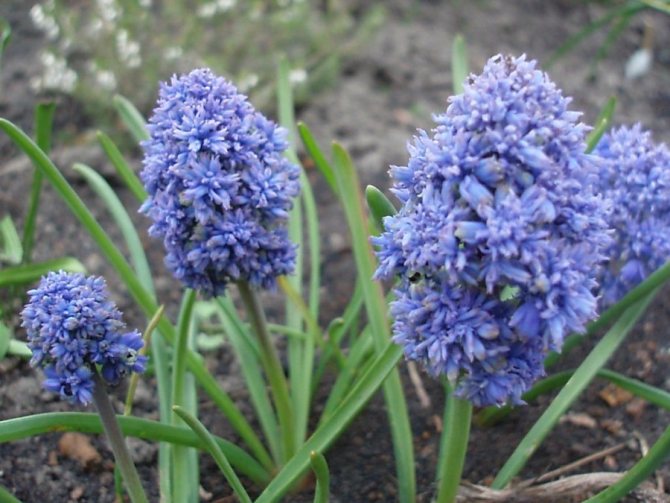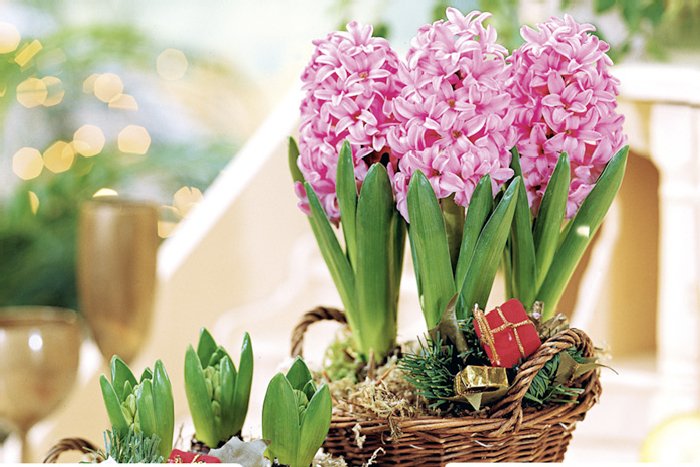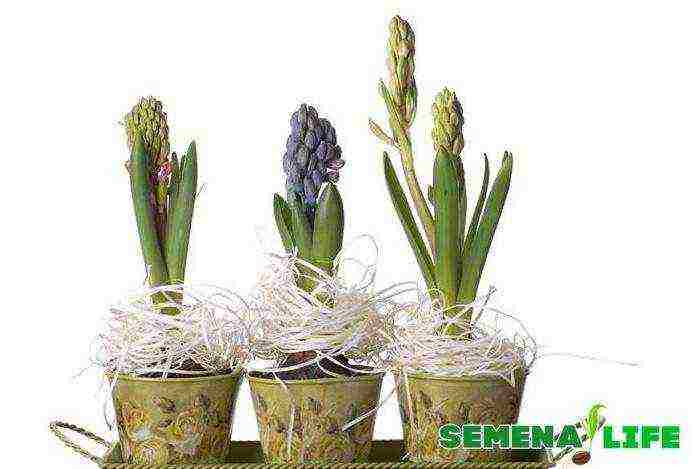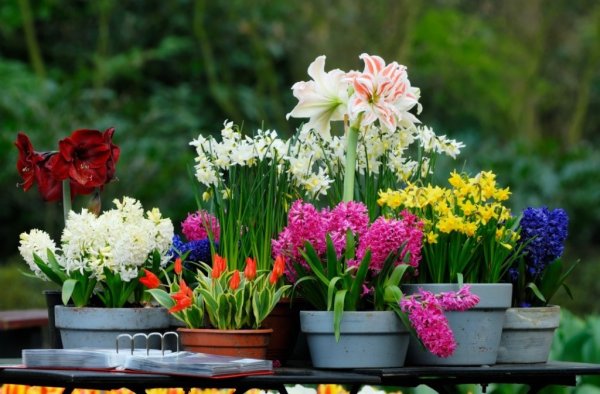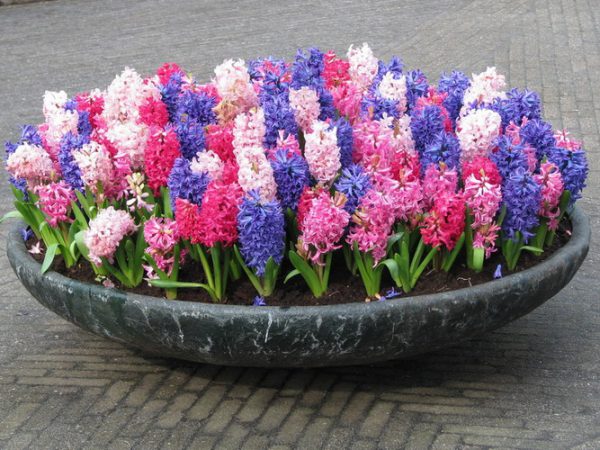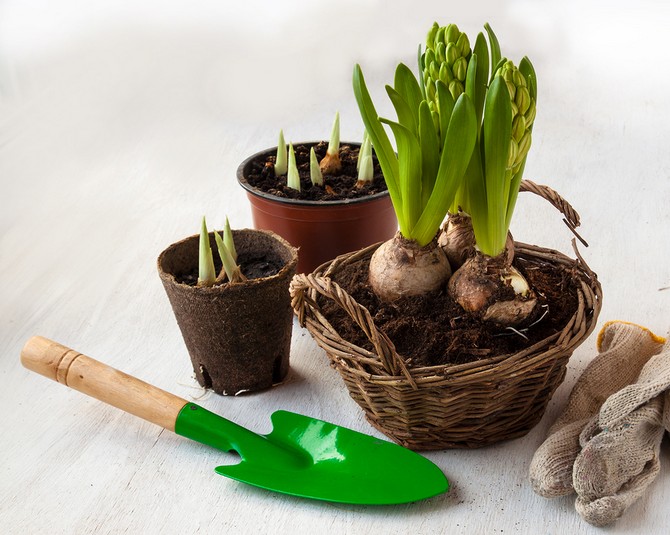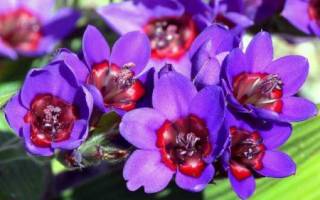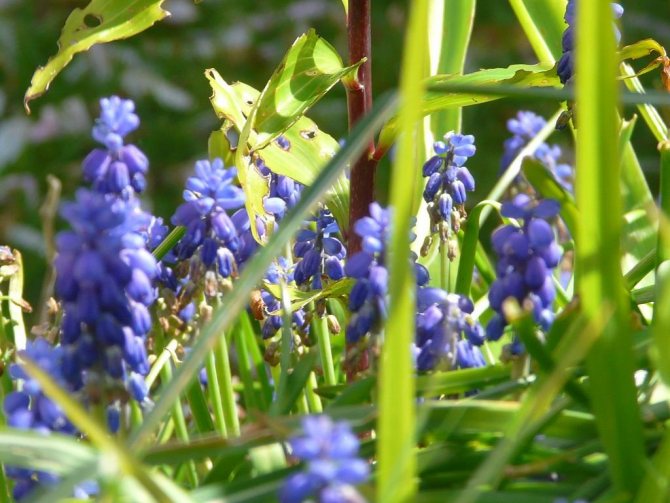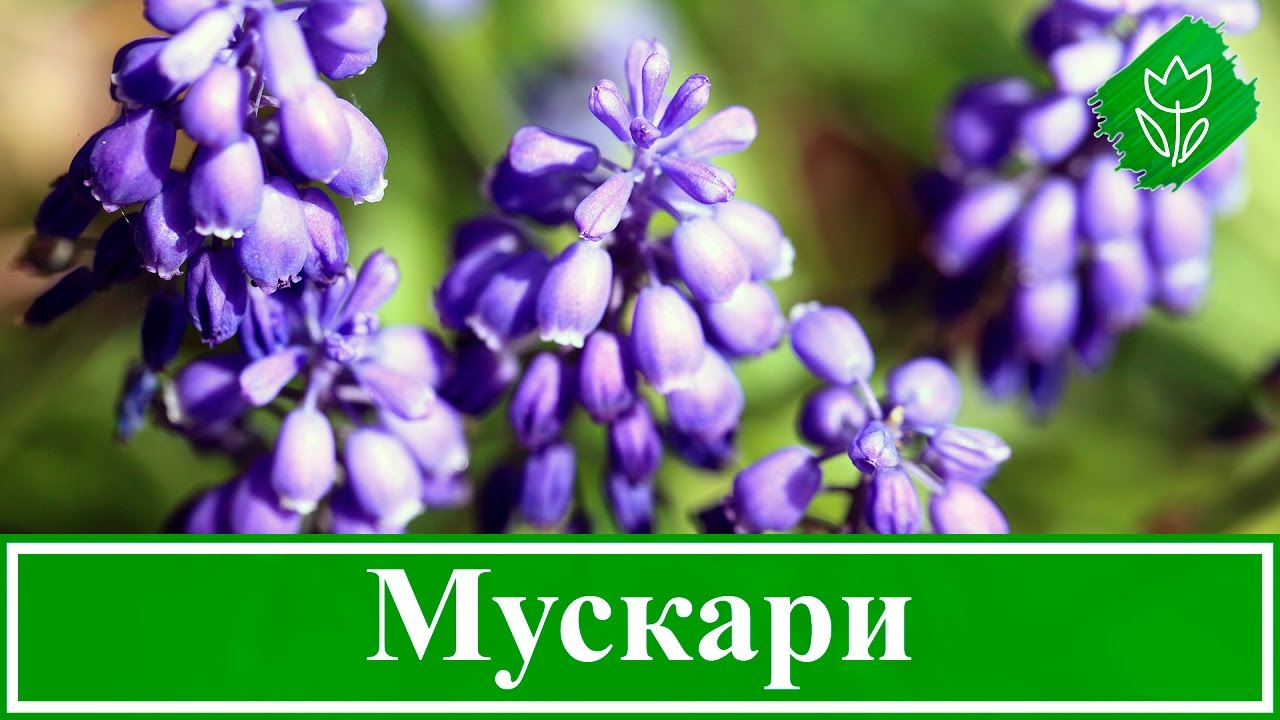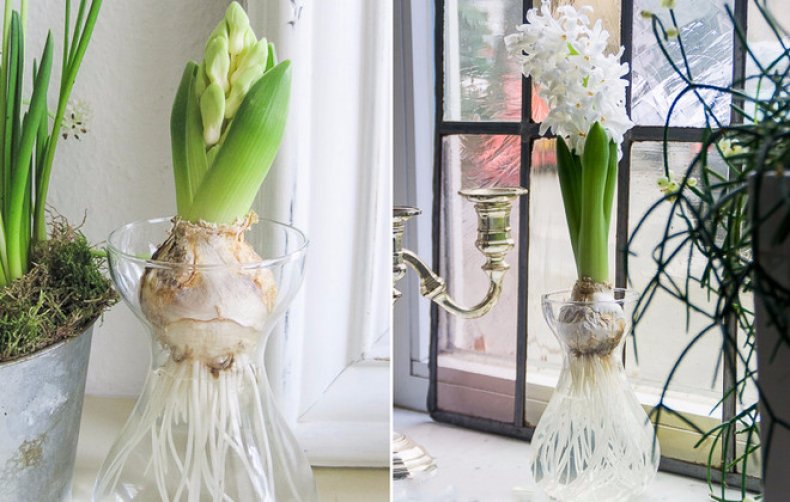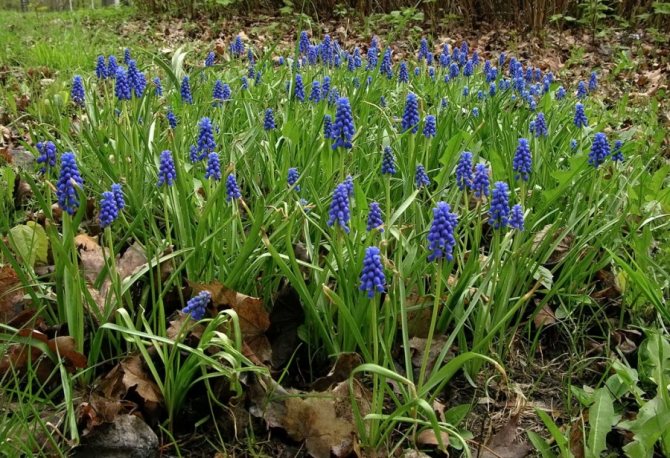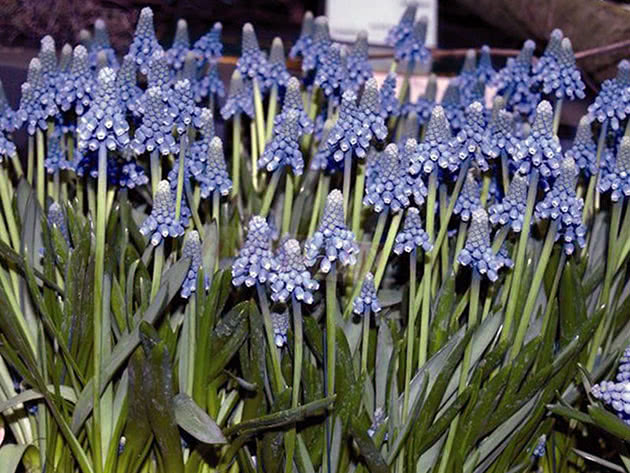Features in the cultivation of hyacinths in the open field

certain
If you decide to decorate the garden of your summer cottage with this particular type of plant, then you need to learn how to grow hyacinths correctly and when to plant.
The right conditions for good flower development:
- The soil for the plant should be neutral. The ideal substrate would be a mixture of turf and leafy soil in equal proportions. With high acidity of the soil, liming is necessary; peat or river sand is added to clay soil.
- A loose substrate requires excellent drainage to protect the flowers from waterlogging.
- The area for hyacinths in the garden is selected warm and sunny.
- There should be no strong winds or drafts in the place where the flowers are grown. It is not uncommon for gardeners to plant plants next to shrubs and trees, which protect the flowers from gusts of air.
- Fresh organic matter is prohibited for this perennial.
How to properly care for hyacinth
The flower belongs to bulbous plants and has about 30 species. However, some scientists are inclined to consider the plant to be monotypic, creating different forms and varieties in one form. It was brought to Europe in the 16th century from the countries of Asia Minor. The hyacinth bulb is perennial, it does not form replacement bulbs, like a tulip, and therefore requires special treatment. The new-forming parts of the flower are the buds of renewal, which form annually in the same bulb. The long care process begins with the bulb.

Forcing the onion
To successfully bring the plant to flowering, it is necessary to choose large, at least 5-6 cm bulbs.
Tip: If the seed is taken from open ground, and not in the store, then it should be dug out at the end of June, after flowering has completed. The bulb is allowed to rest until September and only after that preparations for a new revival begin.
So, the hyacinth has faded, what to do with the bulb? It must be planted in the ground from a mixture of earth and sand, having previously laid a layer of drainage on the bottom of the pot. Press the body of the bulb upside down and sprinkle with earth. When planting, make sure that the bulbs do not come into contact with each other and with the walls of the pot. Then the plant is removed to a dark and cold room. At home, they use a refrigerator for this. In this mode, the plant should spend 2 months.
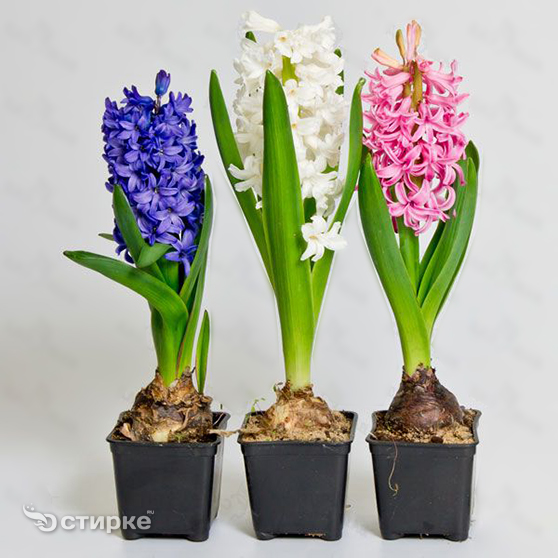
Important: when the bulb is in the refrigerator, do not overdry the soil, moisten it regularly, otherwise the flower will not wake up. As soon as you notice that the flower has sprouted 2-2.5 cm high, it's time to transfer it to a warmer place, with a temperature of 10-12 degrees
Wait for the buds to appear and transfer your treasure to the windowsill. Please note that by planting the bulb in September, you will receive the first flowers by the New Year, and the October planting will yield results by March 8th. Now let's look at how to take care of the flower further.
As soon as you notice that the flower has sprouted 2-2.5 cm high, it's time to transfer it to a warmer place, with a temperature of 10-12 degrees. Wait for the buds to appear and transfer your treasure to the windowsill. Please note that by planting the bulb in September, you will receive the first flowers by the New Year, and the October planting will give the result by March 8. Now let's look at how to take care of the flower further.
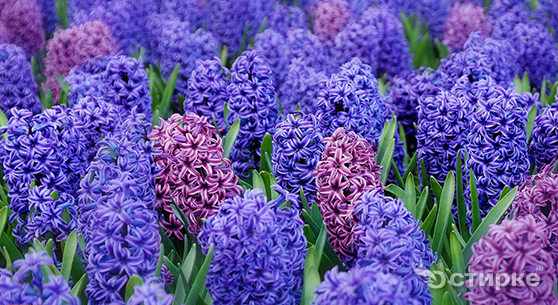
Temperature
For a mature plant, a temperature of +20 degrees is considered comfortable. It does not like drafts and does not tolerate proximity to heating radiators. Choose a place where your handsome man will be cool and not windy.When planting and caring for hyacinths outdoors, place the plants under shrub protection to keep them out of drafts.
Lighting
An adult plant needs an optimal lighting regime. It is photophilous, but it is better to use artificial lighting when caring for a hyacinth than to expose it to direct sunlight. In the garden, the plant should be darkened slightly with nearby flowers or shrubs.
The soil
In care, the main thing is to choose the right composition of the soil. The flower loves water-permeable, well-fertilized soils, without acidification. When growing plants in open spaces, acidic soils must be limed, and sand and peat must be added to clayey ones. For the home, it is enough to buy a universal mixture for flowers.
Attention! Do not fertilize the plant with fresh, slightly decomposed manure. Such feeding will lead to burning of the bulb.
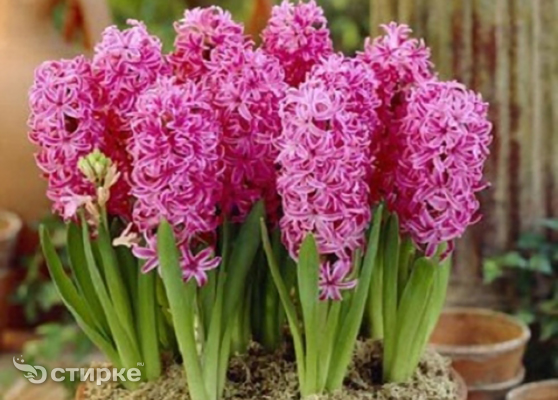
Landing
For the suburban area, the landing mode is changing. What to do after flowering hyacinthsif they grow in your garden?
- First you need to prepare the site. Work begins in August to allow the soil to sink and prevent the plant roots from breaking off.
- The soil is dug to a depth of at least 40 cm.
- Then fertilizer is applied. Humus or rotted manure is taken at the rate of 10-15 kg per one square meter of soil. Peat, sand and mineral fertilizers (superphosphate) are added, calculating a portion of 60-80 g per square meter.
- They begin to disembark at the end of September or at the beginning of October. Early planting can lead to plant growth in winter and it will die.
- If the planting took place at the end of October - beginning of November, the plant must be well insulated and covered with a film from snow and cold rain.
- For flower bed planting, when a lot of planting material is taken, the soil must be raised by 15-20 cm. Such a rise will give good aeration in the spring, and the soil will warm up faster.
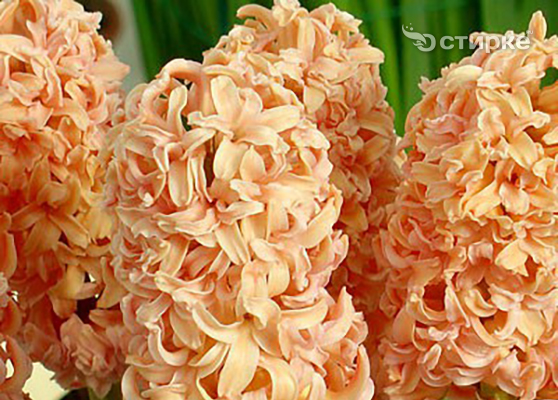
Post-flowering care
If you do not know when to dig up a handsome man after flowering, take a note: the most preferable time is the end of June - beginning of July. In the garden and at home, you need to dig the bulb out of the ground, wash, dry, separate the children, if any, and lay them in storage. Then move on to forcing them, described above.

How hyacinths reproduce
Hyacinths reproduce in the open field in various ways. All of them take a fair amount of time, but not very labor intensive.
- Cutting out the bottom;
- Notching the bottom;
- Scales from the bulbs;
- Cuttings of a leaf.
Growing a new corm takes up to 3 years. However, from one corm, you can get a large number of hyacinth babies, suitable for planting in spring in open ground.
Cutting the bottom
The procedure is not complicated, it is enough to follow the algorithm:
- Remove the basal lamina from the bulb by cutting with a curved scalpel.
- Then remove the shoot germ and bud, revealing the part of the tuber producing new bulbs.
- Treat the cut side with a fungicide to prevent disease and rot during the growth of new bulbs.
- Place the inverted cut onion in a dark, warm place for several weeks until the cut is tight.
- Wait until the new babies have grown their own roots before removing them from the mother's bulb.
Notching the bottom
The technology of notching the bottom coincides with the cutting algorithm, but it is easier and faster. Instead of completely separating the bottom, reproduction is carried out using cuts with a depth of 1/3, 1/4 of the depth of the bulb. New bulbs will form at the cuts when kept in a dry place. Within 2 years, there will be a gradual transformation of the sprouts into full-fledged tubers. Further, in the spring, they plant hyacinths.
Scales from bulbs
Before separating the flakes, it is necessary to prepare a nutrient substrate. Choose a light and nutritious mixture. Store-bought earth enriched with minerals is suitable. The procedure looks like this:
- Pour earth into a bag
- Moisten the earth. Humidity should not be excessive; it is enough to spray on the peat from a spray bottle.
- Separate the scales from the bulb. Up to a third of future babies can be detached without harm to the maternal tuber.
- Place the scales in the peat.
- Put in a box and put in a dark, well-ventilated, warm place.
New corms are formed within two months. They will have their own root system, which indicates their readiness for replanting and further growth next year. In the spring, you can plant young hyacinths in a pot.
Cuttings of a leaf
During the flowering period, it is necessary to cut off a few strong, dense leaves. The leaves are placed in a greenhouse, where prepared soil is poured: a layer of peat, on top - a layer of sand 2 - 3 cm. Future seedlings are kept moist for several weeks. The formation of the baby can be traced by observing the condition of the seedling. A yellowed and dead leaf means that the formation of a new corm was successful, and soon it will be possible to plant the hyacinth in the ground.
Hyacinths: planting and care in the open field
Such specimens will be able to quickly take root, as well as successfully transfer the winter period and bloom profusely next year. In spring, hyacinths are not planted.
How to plant hyacinths
do not plant hyacinths too close to trees or shrubs
Prepare the soil for planting the bulbs in advance. They dig it up at a depth of 35–40 cm. The following amount of fertilizer must be applied to 1 square meter of the beds:
- Superphosphate - 70-80 g;
- Magnesium sulfate - 15 g;
- Potassium sulfate - 30 g;
- Fresh compost (or humus) - 10-15 kg.
Limestone is introduced into acidic soil, and peat or river sand into clayey soil. For sandy areas, you should increase the feeding with magnesium and potassium by 1.5-2 times.
Large bulbs should be planted 25–30 cm away from small ones. The depth of the hole should be at least 15-16 cm. The larger the bulb, the deeper it should be. If the small bulbs are too low in the soil, then they will not be able to grow out.
Planting hyacinths in autumn
period
If you plant seed before these dates, then they will quickly grow and die in winter. And with planting in late autumn, the plants will not have time to take root until the winter frosts.
The bulbs selected for planting are treated in a fungicide solution for 30-40 minutes. Such treatment contributes to better rooting and high resistance of plants to bad weather.
The planting depth for bulbs ranges from 15–20 cm. The distance between the bulbs should be 15–20 cm, and between the rows - 25–30 cm.
landing
To speed up flowering, hyacinth should be planted in high beds that quickly warm up under the sun.
In latitudes with a temperate climate, planting of bulbs can be done in late autumn, in the first half of November, when there is still no severe frost. The process of growing flowers before winter includes the obligatory mulching of the soil with peat, sawdust, foliage or spruce branches. The shelter is removed in early spring so that it does not damage the developing seedlings.
Flower care
Hyacinth care after planting consists of the following activities:
Loosening. The plant requires regular loosening. To facilitate the process of work, after planting, be sure to mulch the soil.
Weed control. Hyacinth is a clean plant, therefore it is necessary to timely remove weeds and other herbs that interfere with the normal development of the flower.
Watering. The hyacinth should only be watered during dry periods. The soil should be moistened at the level of 20-25 cm deep. Since the plant blooms in the spring months, it does not need watering: the snow that has melted after winter moisturizes the soil sufficiently so that the flowers fully open and fill the air with a pleasant aroma.
Top dressing
Fertilizing the flower is an important part of caring for it.Hyacinth needs three additional feeding during the growing season
With the appearance of the first shoots, 30 g of ammonium nitrate per 1 square meter are introduced into the soil. The second feeding is done during the coloring of the buds. For the same area, you will need 25 g of ammonium nitrate, 30 g of potassium chloride and 35 g of superphosphate. At the end of flowering, 35–40 g of superphosphate is added to the soil. Top dressing followed by watering should be applied to the ground between rows or flowers.
With proper planting and care of hyacinths, abundant flowering of the plant will be guaranteed.
Features of planting hyacinths in spring
Many gardeners are interested in: when to plant hyacinth in open ground - in spring or autumn? Most often they do this in the fall, but some prefer to plant in the spring. In this case, a sandy cocoon is created, which is sprinkled with earth.
In order for the plant to start blooming in the same year, it is necessary to put the tubers in the freezer an hour before planting, but it is not recommended to overexpose them.
The disembarkation must be done after the threat of frost has passed. So that the harvested soil is not washed away by the rains, the soil must be covered with leaves or thin plywood sheets.
The bulbs must be healthy and medium-sized - in this case, the flower will be more resistant to bad weather conditions. They must be planted to a depth of about 15 cm with row spacing 20 cm. Bulbs smaller than 5 cm in diameter should be planted thicker.
River sand is poured into each hole with a layer of three cm, after which the bulbs are laid and sprinkled with soil. Sand is necessary in order to protect the planting material from infections and waterlogging.
If planting is carried out in large quantities, it is best to make high beds, then caring for this plant will become much more convenient. When it gets cold, the flower must be covered peat or sawdust.
Top dressing
After the hyacinth has been planted, it must be fed, since nutrients are required for the normal development of the bulbs.
These are, first of all, mineral fertilizers, which are applied in the spring, when the snow has completely melted. The best and most effective are ammonium nitrate and potassium chloride.
As soon as the buds appear, a second feeding with mineral nutrients is carried out. For the third time, only potassium chloride should be added. It is recommended to loosen the soil each time so that the roots receive as much air as possible.
It is important to observe the following care guidelines:
- Be sure to remove weeds that can destroy the plant.
- Flowers are watered abundantly, but infrequently.
- Diseased specimens must be removed and burned, otherwise diseases and pests will spread to other plants.
Protection from harmful factors
When this flower is taken care of in the wrong way, it can lead to dire consequences. For example, due to a lack of light and excessive moisture, the leaves begin to turn yellow and stretch in length.
If water gets on the buds, they may not open. If they are absent at all, then this may be due to the planting of bulbs that are too small or their content is incorrect.
Hyacinths can be attacked by bacterial rot, which can, after a while, turn the bulbs into mucus with an unpleasant odor.
It is useless to fight this trouble, so the plant should be dug up and burned, and the place where it was planted must be etched with bleach or 5% formalin solution.
Thus, we can conclude that it is possible to plant a plant in open ground in spring. The main thing is that there are no more frosts on the soil. Proper care of him will allow you to grow a gorgeous plant with very beautiful flowers in the garden, which will delight the eye for a long time.
Types of hyacinths
There are different views on the taxonomy of the genus. According to some researchers, it has up to 30 species, while others consider it to be monotypic, i.e.with one kind, but which has a large number of varieties and shapes. Hyacinth grows wildly in the countries of the Eastern Mediterranean and Central Asia.
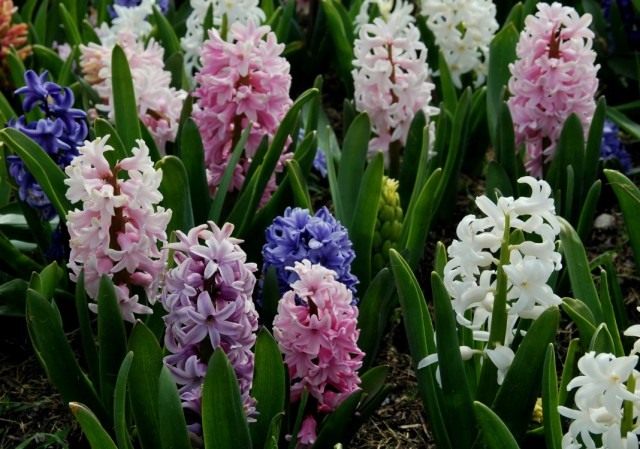 Hyacinth (Hyacinthus). Pascal Kestemont
Hyacinth (Hyacinthus). Pascal Kestemont
On my own behalf, I will add a beautiful legend that is associated with the name of the flower. It comes from the name of the hero of Greek mythology - a beautiful young man named Hyakintos (or Hyakinth from Amycles), in whom the sun god Apollo was in love.
Once, during a discus throwing training session, the jealous god of the West Wind Zephyr, who was also in love with Hyakinthos, mortally wounded the young man. In place of the spilled blood of Hyakintos, a charming flower grew, which Apollo named after his deceased beloved.
Forcing hyacinths
Forcing - this is the name of the stimulation of a plant to unplanned flowering. Forcing hyacinths at home will not cause much trouble.
For the process to be successful, you need to take bulbs with a diameter of more than 4 - 6 cm.Home forcing is carried out in several successive stages:
- Digging up a flower (most often at the end of June).
- Place the bulbs in a humid room with a temperature of up to +30 ° C; storage under such conditions lasts 2 weeks.
- The next step is to transfer the bulb to a cooler room, where the temperature is + 23-25 ° C.
- After a two-week stay in the warmth, the bulb "moves" again - to + 17-18 ° C.

At the end of the three-fold movement, the bulb will be completely ready for planting. If the material was purchased in a store, then all the necessary preparation has been carried out, you only need to carefully store the hyacinth bulbs until the moment of planting. It takes about 4 months for a flower to grow and form into a beautiful inflorescence.
If you need a bouquet by a certain date, you need to focus on the following dates:
- To obtain a flower for the New Year holidays, forcing is carried out in the fall in September or early October;
- To make the plant happy on March 8, the process begins in the first decade of November.
Hyacinths Ailos, Blue Jacket, Carnegie, City of Haarlem, Gypsy Queen, Woodstock, Anna Maria await early forcing. Late forcing is indicated for almost all varieties.
Diseases and pests of hyacinths
Diseases of hyacinths and their treatment
Outdoor hyacinths are extremely resistant to infections. Greenhouse and forcing plants suffer from diseases more often. If the storage conditions are violated, the hyacinth bulbs can be affected by penicillosis, or storage rot, which is caused by fungi of the genus Penicillium. The causative agents of penicillosis are activated when the bulbs are stored at temperatures below 17 ºC in high humidity conditions. Planting material with mechanical damage is especially susceptible to infection. A sign of penicillosis is the drying out of the ends of the roots, which is usually found before planting. If you make a cut just above the bottom, you can see that the inner tissues have acquired a light brown tint. Invisible from the outside, the decay process continues during and after the planting of infected bulbs, which either do not form roots at all, or do not form them enough. In such plants, flower stalks do not gain height and break easily. In places of infection, fungal colonies appear on the bulbs, the tissues become soft and darken.
To avoid the development of infection, store hyacinth bulbs in a well-ventilated area, with an air humidity of no more than 70%, and immediately plant bulbs with prematurely grown roots in the ground.
Hyacinths can be attacked by yellow bacterial rot, which turns plant tissues into fetid mucus. Symptoms of the disease are growth arrest, the appearance of spots and stripes on the leaves and flower arrow, and then rotting areas. Suffering from disease and bulbs. When the first signs of bacterial rot are found, the diseased plant should be dug up and burned, and the place where it grew should be shed with a five percent formalin solution or bleach.
Hyacinth pests and control
Of insects, garden hyacinths are annoyed by flower flies, the larvae of which feed on the tissues of the bottom of the bulb. Flies are destroyed before laying eggs by treating the plants and the soil around them with a solution of Mukhoed, Tabazol or Aktara.
The meadow mite is also an enemy of hyacinths. Its activity occurs in late spring and early summer. The main danger of arachnids is that they are carriers of incurable viral diseases. In plants infected with mites, peduncles are bent, and the leaves turn yellow and wither prematurely. They destroy ticks with acaricides - Aktellik, Talstar Pro or other drugs of a similar action.
The danger for hyacinths is posed by bears that damage flower bulbs right in the ground. The activity of these insects begins in May, when they crawl out of the earth warmed by the sun. To collect and destroy all pests, dig shallow holes in the area, spread fresh manure or semi-rotted straw in them and cover with old slate or a piece of board on top. Bears will crawl into traps to lay eggs in them, and in 3-4 weeks you can begin to destroy them. Of the pesticides, Medvetoks, Beardrops, Boverin, Grizzly, Thunder and other drugs of a similar effect have shown effectiveness in combating the pest.

